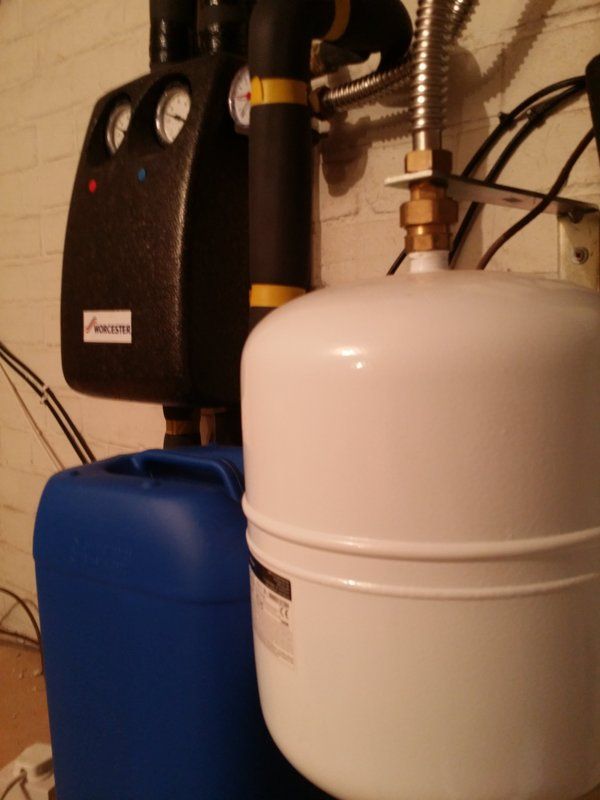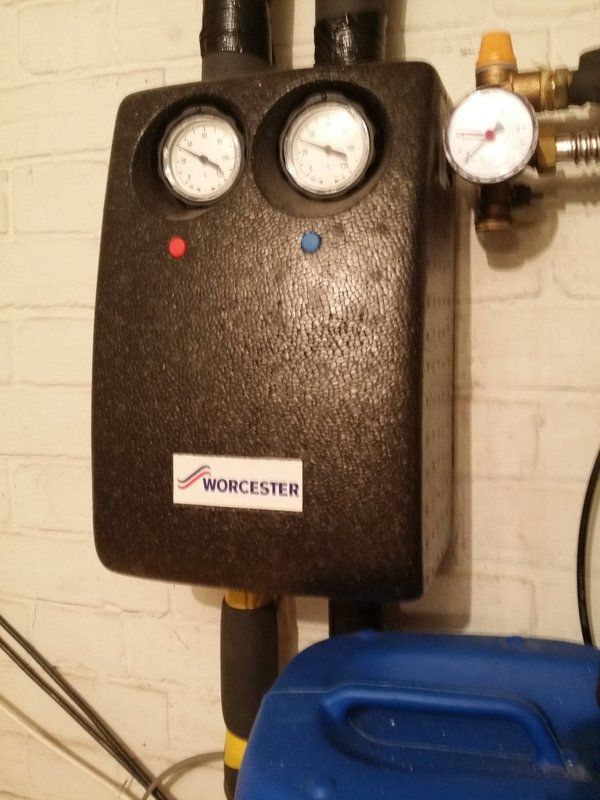Hi,
I am looking for some guidance with my latest domestic problem, which is this time... my solar water heating.
When I bought the house it had solar water heating pre-installed. This consists of three panels on the roof that are operated by a "Worcester" unit in the loft and feeding two hot water tanks in the airing cupboard that is monitored by a "Worcester" TDS10 control unit.
The solar water heating has been working fine over the last few weeks, however a couple of days ago it suddenly stopped producing hot water.
Looking in the loft, the system pressure seems to have dropped to zero. However I am not sure if the pressure should always be at the set "red line" level even when the pump is not working (I guess it probably should be, as this is the case with my central heating). Looking at the system in the loft there seems to be a pressure relief valve that vents system fluid into a blue plastic drum (presumably when the pressure gets dangerously high), however this drum is empty, so no fluid has been vented here.
The TDS10 control unit still shows a animation of fluid cycling around the system, however the tank temperature is not increasing. Also the wife has reported that it has flashed up with the error "SYS" from time to time.
So the question is... how do I diagnose and repair the fault? I know next to nothing about the system, and I'm looking forward to learning!
Thanks


I am looking for some guidance with my latest domestic problem, which is this time... my solar water heating.
When I bought the house it had solar water heating pre-installed. This consists of three panels on the roof that are operated by a "Worcester" unit in the loft and feeding two hot water tanks in the airing cupboard that is monitored by a "Worcester" TDS10 control unit.
The solar water heating has been working fine over the last few weeks, however a couple of days ago it suddenly stopped producing hot water.
Looking in the loft, the system pressure seems to have dropped to zero. However I am not sure if the pressure should always be at the set "red line" level even when the pump is not working (I guess it probably should be, as this is the case with my central heating). Looking at the system in the loft there seems to be a pressure relief valve that vents system fluid into a blue plastic drum (presumably when the pressure gets dangerously high), however this drum is empty, so no fluid has been vented here.
The TDS10 control unit still shows a animation of fluid cycling around the system, however the tank temperature is not increasing. Also the wife has reported that it has flashed up with the error "SYS" from time to time.
So the question is... how do I diagnose and repair the fault? I know next to nothing about the system, and I'm looking forward to learning!
Thanks




